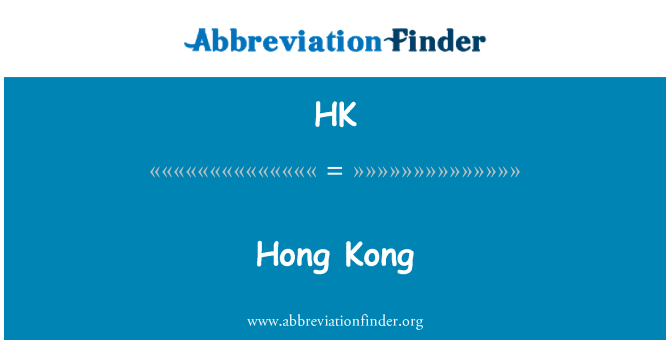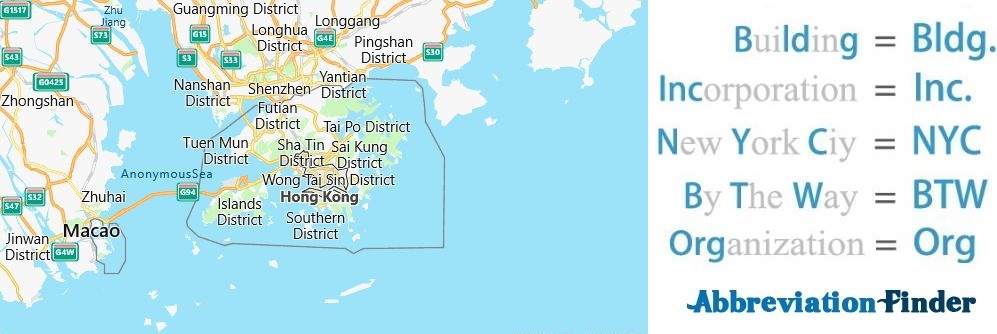Hong Kong
Since 1997, Hong Kong has officially been part of China again, but 150 years under British rule has naturally left its permanent mark on architecture, culture, food and the people. This is arguably China’s most western-influenced city, and also the most prosperous. The ordinary Chinese cannot visit Hong Kong without a visa.
Hong Kong can be visited year-round and has a lot to offer in a very limited area. Here you will find world-class museums, wonderful restaurants, unlimited shopping and impressive modern architecture, as well as hundreds of temples and pagodas. Hong Kong is also a paradise for nature lovers. A short walk away from the city center you will find sandy beaches, mountain peaks, forests and large park areas.
Unlike the rest of China, the vast majority of English is spoken in Hong Kong. Almost all signage and information are in both Chinese and English, so most tourists should be able to find it on their own without too much trouble.
Get to know Hong Kong
Hong Kong, or the Hong Kong Special Administrative Region of the People’s Republic of China, as the full and correct name really is, is located in southeastern China with a coast facing the South China Sea. As the name indicates, the city holds a special position within China, and Hong Kong has been promised to keep its economic and social system at least 50 years ahead. Hong Kong is one of the most densely populated areas in the world, with over 7 million inhabitants spread over 1100 square kilometers. And despite the fact that only approx. 10% is utilized for housing purposes.
Local airline Cathay Pacific is one of Asia’s best, largest and most used airlines, and many travelers have switched flights in Hong Kong en route to another location in Asia or Australia. But too few take the time to stop here for a few days and experience what results when you mix British and Chinese culture for well over a hundred years.
Very generally, we can divide Hong Kong into four parts. The city center and the original settlement are located on Hong Kong Island. The mainland areas consist of Kowloon and New Territories, which in turn have the border with China. In addition, there are over 230 more or less inhabited islands that also belong to Hong Kong, but which are of less interest to a regular tourist. Within these four sections, there are again eighteen different districts and areas.
City Profile
- Abbreviation: HK
- Country: China
Hong Kong Island
Hong Kong Island is arguably the most important part of Hong Kong. Here you will find all administrative buildings, supreme court, the stock exchange, as well as the city’s premier shopping district, nightlife areas, the more exclusive residential areas and headquarters of countless multinational companies. Most of it is located along the coast on the north side of the island.
The most central district here is naturally called Central. This is the most important business area, and the architecture is characterized by numerous glass and steel skyscrapers, a powerful sight well known from most Hong Kong postcards. Here the British founded their settlement when they took over the area in 1841, and you still find the governor’s house and other administration buildings from that period in Central. Here is also Hong Kong’s beautiful botanical garden and a beautiful and well-run zoo, and the lower train station that brings you up to Victoria Peak.
The main nightlife, restaurant and bar area can be found in the Lai Kwai Fong and Soho areas. Especially the city’s European residents and tourists are drawn here after sunset. Lai Kwan Fong is a few narrow streets lined with trendy bars and nightclubs, and the price level is a few notches above the rest of the city. Soho is more restaurant-oriented, and you will find several of the city’s best eateries, as well as antique shops and art galleries.
West of Central are the slightly more Chinese-influenced areas, such as Sheung Wan. Here is the Temple of Man Mo, Hong Kong’s oldest market building Western Market, and the 73-storey tall skyscraper The Center, with its distinctive full-fledged neon light arrangement, which rolls through the entire color spectrum after sunset.
East of Central is Wan Chai, also one of the city’s premier and liveliest nightlife districts, but with a slightly more fringe reputation than Lai Kwai Fong, due to the Red Light District being here. But you’ll also find plenty of other attractions, such as the Hong Kong Convention & Exhibition Center, Hung Shing Temple, and the building, which is in practice the world’s largest clock; an ingenious system consisting of glass pyramids, light rays and luminous color fields.
On the south side of Hong Kong Island it is worth noting Stanley, well known for the lively Stanley Market and for its two sandy beaches, and the Aberdeen district, where you will find harbor promenades, yacht clubs, marine clubs, Ocean Park amusement park and an 1850 Tin Hau Temple.
Kowloon
On the mainland on the north side of Victoria Harbor is Kowloon, and the southernmost and most important district here is Tsim Sha Tsui. This is often abbreviated TST, and is considered a cultural center in Hong Kong because half of the city’s museums are located here. The Aerospace Museum, the Science Museum, the Art Museum, the Historical Museum and the Hong Kong Cultural Center all belong to the TST, and there is also the highest density of hotels. Kowloon Park is a tranquil and green lung in the middle of one of the world’s most densely populated areas, where you can see the inhabitants walking with their birds in cages. The park also has a beautiful Chinese garden, and a kung fu center where you can watch traditional Chinese martial arts every Sunday.
If you continue on TST’s main street Nathan Road north, you will reach the Yau Ma Tei and Mong Kok districts. In the first district you will find, among other things, the famous Temple Street Night Market, Jade Market and a Tin Hau Temple from 1876. Tin Hau is the goddess of all seafarers and is highly esteemed among all coastal Chinese. In Mong Kok is the most enjoyable Bird Market, where you can see hundreds of thousands of birds of all colors and sizes sold mainly as pets.
General
If you are used to traveling outside Europe, you can arrange all the sightseeing and excursions on your own. But be prepared that it can take a lot of time, that very few speak English, and that almost all information is in Chinese. Maybe you will stand in line for half an hour, just to be told that you were in line in the neighborhood week and have to sit back in the back. You will probably want to scream out of frustration on a daily basis, but try to keep calm, it is important for the Chinese not to lose face, and they will have less respect for someone who is excited. You can avoid the frustration and save a lot of time by booking your desired events in advance with a skilled tour operator. In Norway, the specialist is Kinareiser, which can help you with everything from airport transfers and sightseeing tours in Hong Kong to week-long tours throughout the country.
Hong Kong Facts
HONG KONG – Specially managed area of China.
Population |
Around 6.9 million |
Official languages |
Chinese (Cantonese) and English |
Control Form |
Specially administered part of the Republic of China, with limited democracy. |
Religion |
China is officially atheistic, but Buddhism stands strong. Around 7% Christians. |
Time Difference |
Hong Kong is 7 hours ahead of Norway, summertime 6 hours before. |
Currency |
Hong Kong Dollar. 100HKD is equivalent to about 80 Norwegian kroner. Credit cards like Visa, Mastercard, Diners and AmEx are accepted in most places. There are plenty of ATMs available. |
Tips |
5-10% if you are satisfied with the service is still okay, although 10-15% service charge is often included in the bill. Also taxi drivers, luggage carriers and others who provide you with a service expect to get a rant. Guides and drivers you should tip with 100 and 50 yuan per day respectively. They often receive very low wages and depend on the tips. |
Embassy |
Norway has a Consulate General located on the 23rd floor at 9 Des Voeux Road West. Tel: + 8522842 3820 |
Tourist |
Hong Kong Island HKTB Center, The Center ground fl, 99 Queens Road Central. Also at the airport, at Star Ferry in Kowloon and on Hong Kong Island at the Causeway Bay subway station. |
Telephone |
+852 |
Emergency |
999 |
Electricity |
220 volts, and most hotels have the same plugs as in Norway. Adapters are normally available in stores. |
Holidays and Holidays |
January 1, May 1 (Labor Day, one week holiday), May 4 (Youth Day), June 1 (Children’s Day), July 1, August 1, October 1 (National Day, One Week Holiday). Also Chinese New Year at the end of the month Jan / Feb. |
Visa |
Norwegian citizens do not need a visa to visit Hong Kong or Macau. (But if you intend to enter the rest of China, you should arrange for a visa before departure. Contact the Chinese Embassy in Tuengen All 2b in Oslo (tel. 2249 2052) at least one week before departure. As of July 2007, the price is 500 NOK for a one-time visa + a passport photo. The passport must be valid for at least six months and have at least two blank pages.) |
Vaccinations |
No vaccines are required, but it is recommended to vaccinate against Hepatitis A. If you are going to China, consider polio, havrix, tuberculosis and diphtheria / tetanus. |
Water |
Can be drunk from the tap, but bottled water is recommended |
Nearest major cities |
Macau, Shehzen, Guangzhou, Zhuhai. |
Safety |
Violent crime and robbery are very rare, pocket theft can happen. |

List of Hong Kong Acronyms
The most commonly used abbreviations about Hong Kong is HK which stands for Hong Kong. In the following table, you can see all acronyms related to Hong Kong, including abbreviations for airport, city, school, port, government, and etc.
View this article in other languages:
Deutsch – Français – 繁體中文


